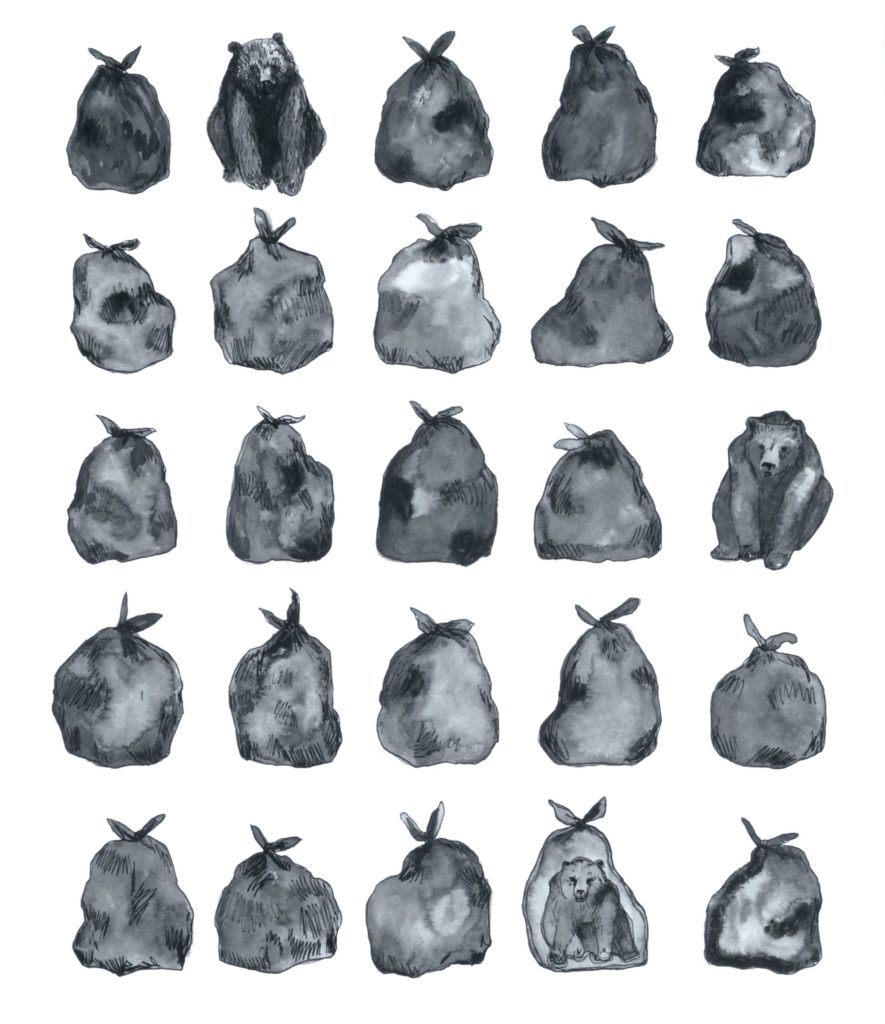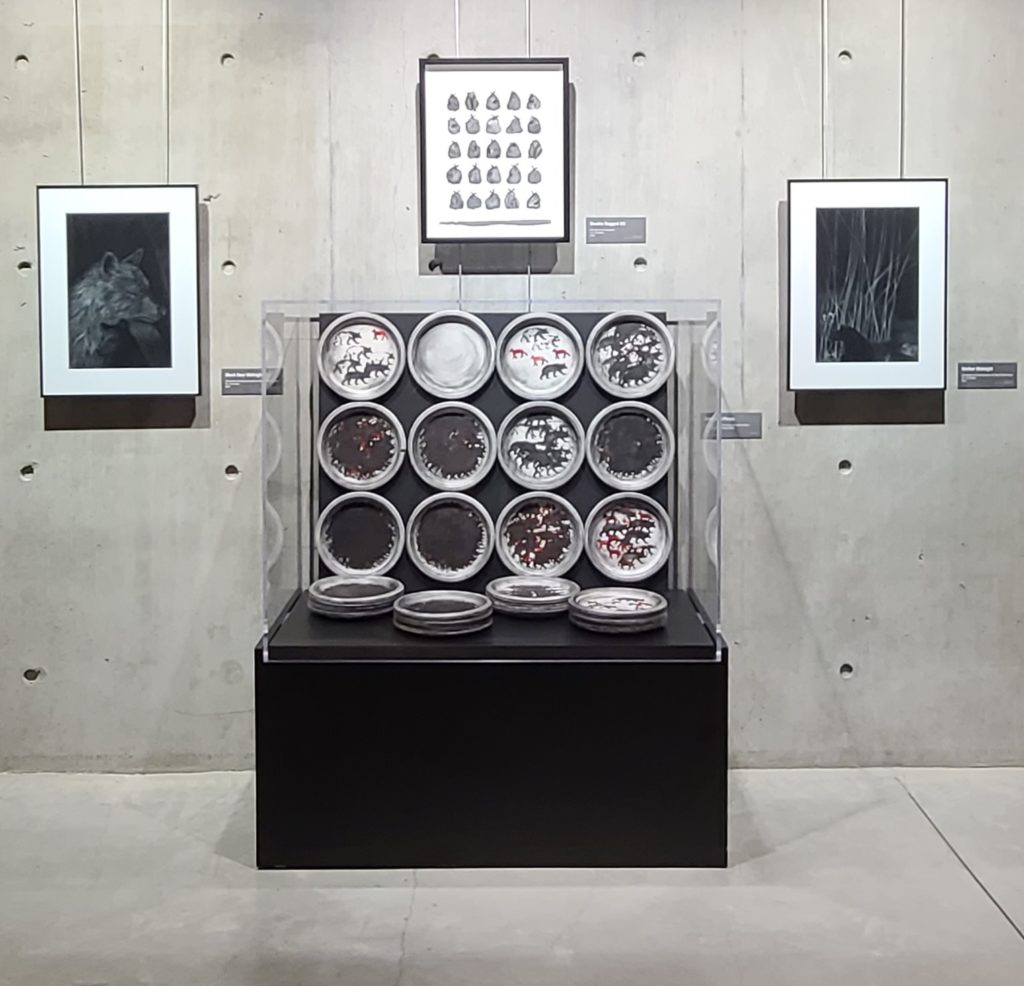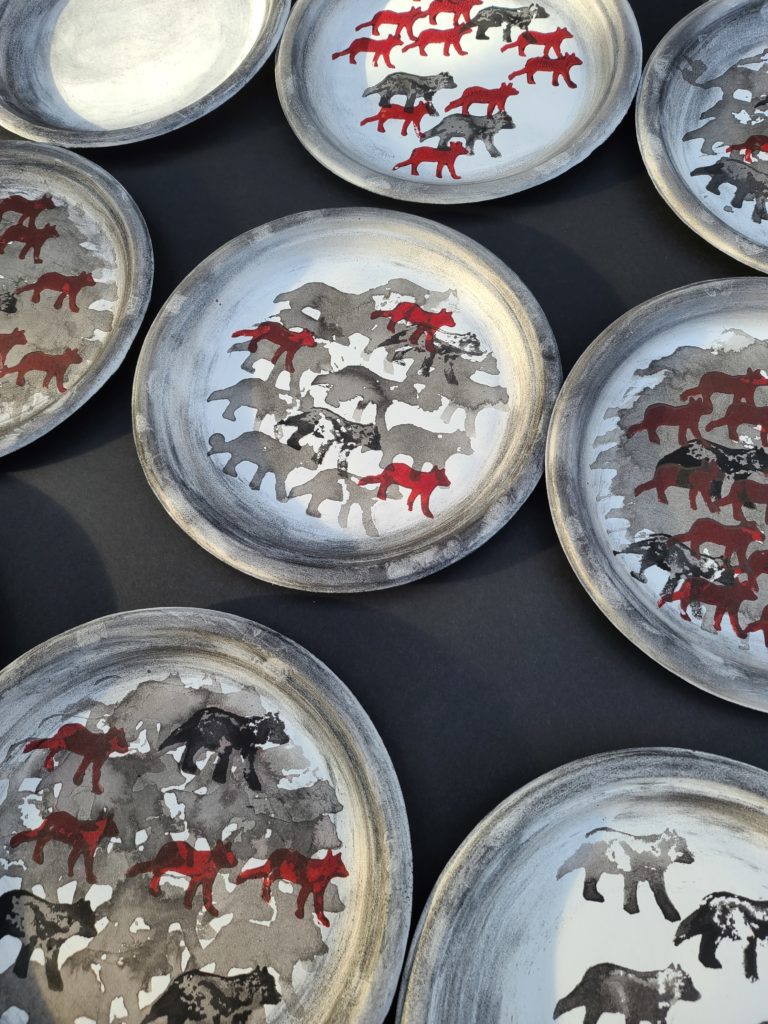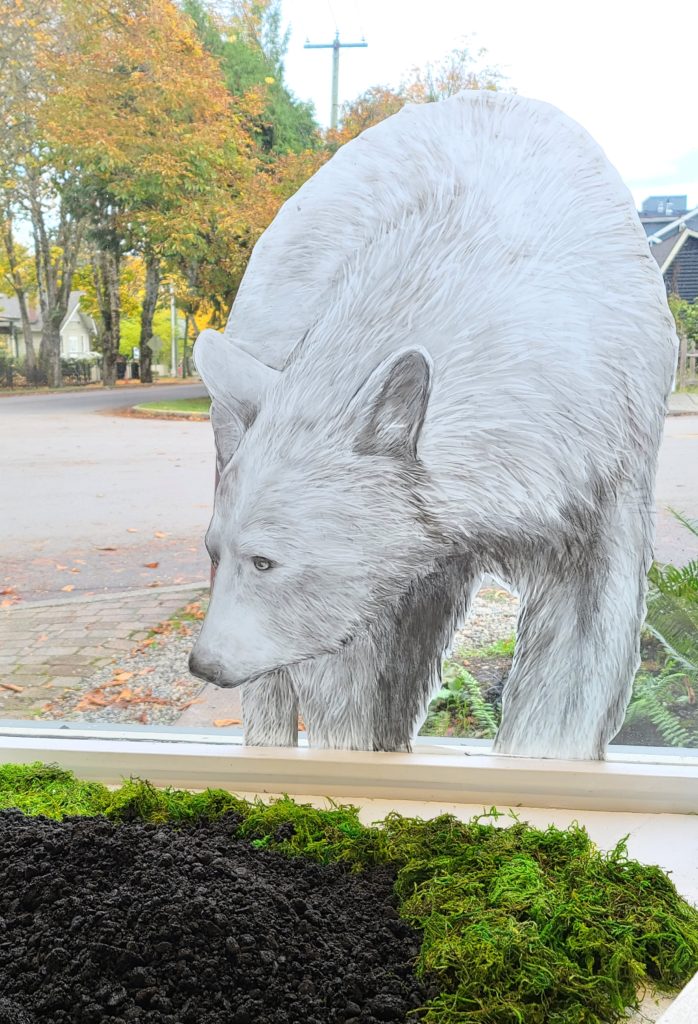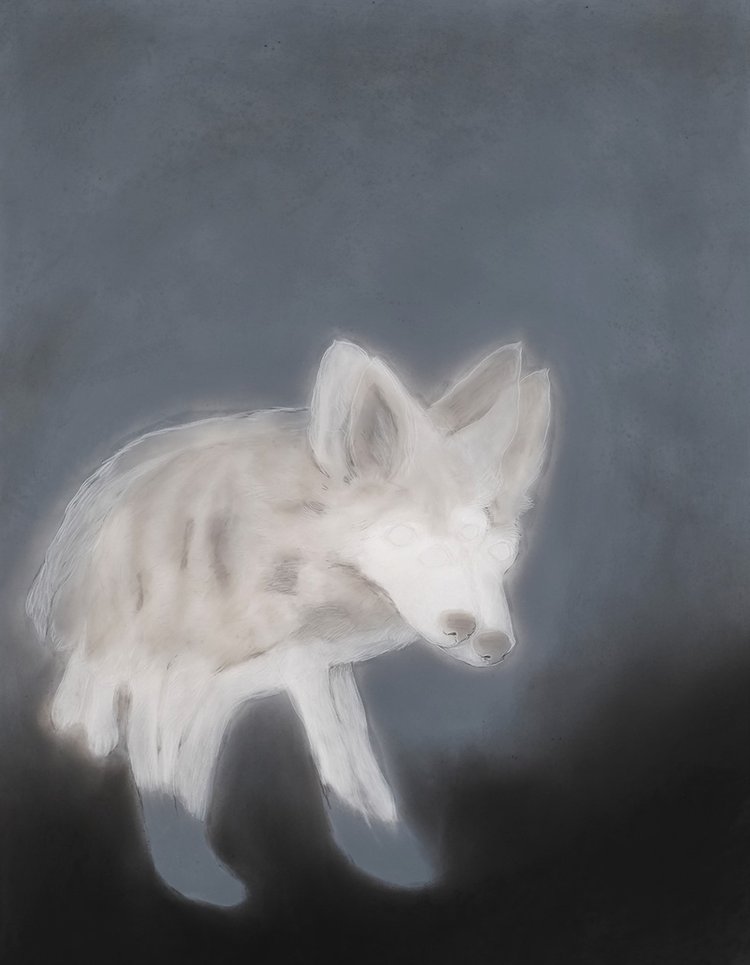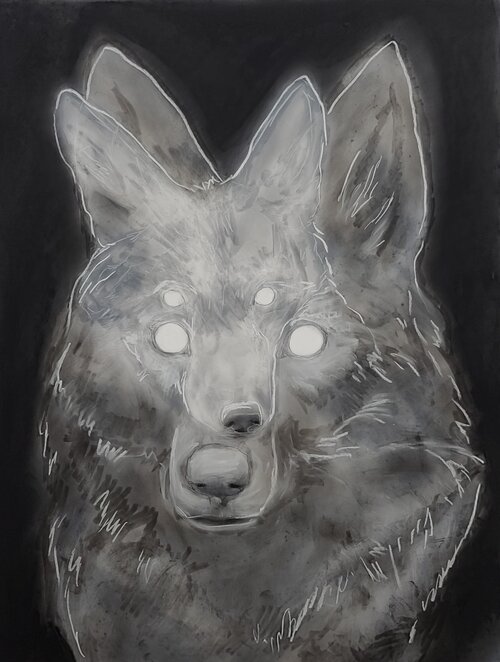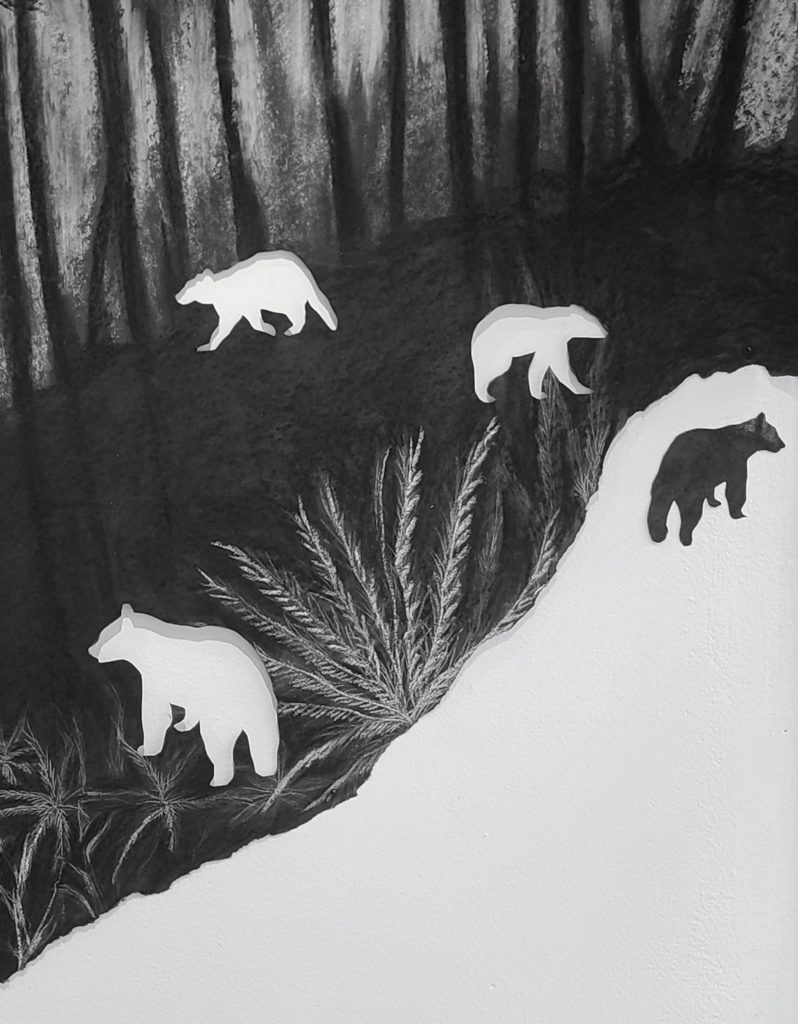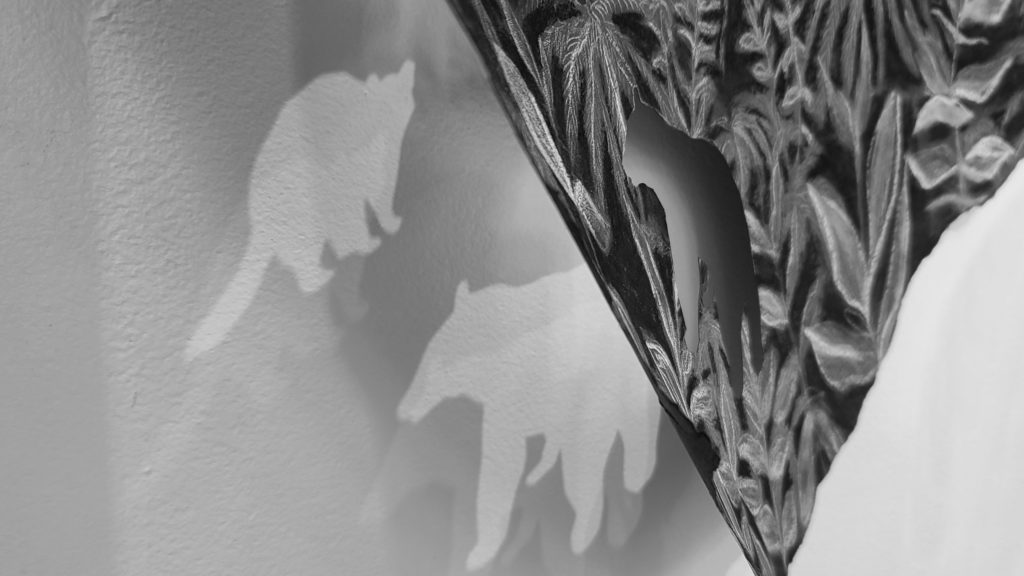
A new exhibit at the Beaty Biodiversity Museum in Vancouver features the work of Canadian artist and The Fur-Bearers’ scholarship recipient Sarah Ronald.
Disrupting Wild Echoes showcases artwork that allows the audience to connect with the experience of wild animals. Sarah received The Fur-Bearers Arts and Science Scholarship for her upcoming project, Encounter-Encounter, which will feature animations of wild animals projected in public spaces. More information on this project can be found on her page by clicking here.
The Fur-Bearers believe that art has a crucial role to play in shaping how we view and understand animals, and it offers a unique lens to understand the human-animal relationship. We caught up with Sarah to hear about her current exhibit and how she uses her art to speak to the experiences of wild animals who we share our communities with.
Q: What message do you hope to capture and convey through your exhibit Disrupting Wild Echoes?
A: Disrupting Wild Echoes is about considering how humans impact wild animals. In a venue that is primarily science-based, I saw this exhibit as a really unique opportunity to present wildlife in a more ethereal way, while also of course including specific conservation messaging.
There is an ongoing engagement project that I included in this exhibit called Messages from Mega Fauna, where viewers are encouraged to hand write a letter to a wild animal that they have encountered. Letter-writers are prompted to ask the animal questions or tell the animal something about that encounter as if there are no communication barriers. The participants then hang their letters in a display space. In the first two weeks of the exhibition the display filled a couple times over, and the exhibit is up through late August so the response has been amazing. This project shows that people want to communicate with the animals that they have encountered. There’s also a strong visual impact in seeing so many contributions from the community – all these wildlife encounters that now exist as a personal record in a visual collection, reflecting all of these encounters that struck a chord with someone.
I will be taking some of these submissions and incorporating it into my #DearSongDog series on Instagram later in the year. In this online project I converse back and forth with an omnipresent Coyote through the mediums of creative writing, art and photography. I look forward to thinking like an animal and writing responses to some of the letters submitted during the exhibition.
Q: What role can the arts play in elevating the conversation about animals in our society?
A: Art has the unique capacity to resonate with humans on such a level as to change how we actually behave in the world; it can guide behaviour change without feeling like an imposition or a compromise, and I think that this is key to making lasting change.
In terms of elevating the conversation about animals in our society, the arts can offer facts to a viewer without feeling didactic, it can present information as an open-ended dialog, and the engagement or the thought process that the viewer goes through as a result of experiencing the artwork is what initiates change in the way that they behave. This is a very powerful tool to tap into when working on conservation messaging and trying to affect humans in a way that benefits wild animals.
Q: What do see are some challenges facing wild animals and how do you hope to address that through your art?
A: The main challenge facing all wild (and non-domestic) animals is of course human behaviour and our overall lack of accountability for how we impact them. I think a big part of this comes down to how we view wild animals (and on a cultural level, how we view ‘the other’ in any scenario).
As anyone with pets can very easily see, there is a huge dissonance between how we treat the animals that we are familiar with versus the animals that we don’t know. It’s not like one species is sentient and another isn’t – they all feel the world in which they live, we just don’t assign as much significance to the animals that don’t live in our homes, just as we may not pay as close attention to broader human social issues that don’t directly impact our lives.
As an artist, I consider myself as a sort of mediary, offering up the animal perspective and experience (as much as a member of the human species can do that!). Topics around food attractants, habitat loss, relocation, and human interference frequently guide my work. But I also create work that references animals as living extensions of the land; my Landspeaker series is about presenting animals as embodied and sentient communicators, the animals are given a role that is about individual autonomy rather than generic species struggling to survive.
One of my favourite local bear conservation groups, North Shore Black Bear Society (NSBBS), started giving names to the bears that they work towards protecting in communities they serve. This simple act of turning messaging about ‘a bear’ into a dialog about gentle ‘Rufus’ or curious ‘Huckleberry’ is a great example of how making a personal connection to an individual animal can promote greater protection of it (and have a very significant impact if that now-cherished animal loses its life due to human carelessness).
Q: Do you feel that there is a need for artists to promote the message of coexistence in our communities?
A: I believe we all have a responsibility to promote the message of coexistence in our communities, in whatever medium or output one has in their own life. It is never one individual or group or organization who holds the responsibility, it is all of us all the time.
Artists communicate through the creation of artwork, and so in that way yes, I would like to see more artists deeply grapple with the topic of coexistence, and I would love for artists to use their creative energy to actually benefit real-world wild animals. I frequently ask myself these two moral and ethical questions in my own practice: How does this artwork actually help the real-world animals that are being portrayed? and more philosophically, What gives anyone the right to portray a wild animal? Asking and answering these questions on an ongoing basis brings a level of consciousness and intention to the work that has the potential to have a much broader impact from a conservation standpoint.
Q: What is the impact you hope to achieve through your art?
A: Ultimately I hope to inspire others to change their way of thinking and behaving towards animals in their daily lives. As a large-brained species, we are so fortunate to have the capacity for complex comprehension and to be able to philosophize deeply, and so my hope is that when people spend time with my work that they can take a sense of openness and compassion towards wild animals along with them beyond the art experience.
I’ll also just share a philosophical footnote that has come about from making my artwork: I believe that if we all regularly practiced being outside alone in the dark we’d be reminded of our place on this planet and we’d become a much more compassionate species.
My ultimate hope is that seeing a wild animal humbles us.
Disrupting Wild Echoes runs from March 17 to August 21, 2022 at the Beaty Biodiversity Museum in Vancouver. Click here for the exhibit details. A virtual tour of the exhibit is also available by clicking here.
For more on Sarah’s work, visit her website at www.SarahRonald.com and Instagram @sarahronaldartist. To view a preview of Sarah’s upcoming project, Encounter-Encounter, watch the video below.
